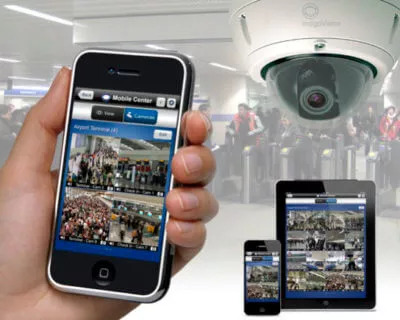This week’s article from MyCCTV goes into detail on the evolution of Video Surveillance Technology.
The landscape of security and surveillance has undergone a dramatic transformation with the transition from analog to digital technology. Over the years, digital advancements have reshaped how we monitor and safeguard our homes, businesses, and public spaces. This shift has not only enhanced the efficiency and efficacy of video surveillance systems but has also introduced a plethora of possibilities in terms of data analysis, integration, and remote access. In this article, we will delve into the evolution of video surveillance technology, shedding light on the shortcomings of analog systems and the advantages ushered in by their digital counterparts.
The Limitations of Analog Surveillance Systems:
Analog surveillance systems, the stalwarts of security for much of the 20th century, relied on conventional methods of recording and monitoring video footage. These systems typically entailed cameras connected to a central recording device via coaxial cables. While analog systems served their purpose for decades, they grappled with inherent limitations that undermined their efficacy in modern security applications.
One of the primary drawbacks of analog surveillance systems lies in the susceptibility of the transmitted analog signal to distortion, which could be influenced by various factors. The transmission quality could degrade due to factors such as interference or signal attenuation, leading to image artifacts and distortion. Even a minor fluctuation in power supply could result in signal interference, commonly known as “picture noise,” which could compromise the clarity and reliability of the footage.
Moreover, analog surveillance systems faced challenges in terms of scalability. Expanding the system to accommodate additional cameras often necessitated extensive rewiring and infrastructure upgrades, rendering it a costly and labor-intensive endeavor. This inherent lack of scalability hindered the adaptability of analog systems to evolving security needs, constraining their effectiveness in dynamic environments.
Another significant limitation of analog surveillance systems was their constrained video quality. Analog cameras captured footage in standard definition, yielding grainy and pixelated images that impeded the identification of individuals or critical details in the footage. This low resolution not only undermined the efficacy of surveillance efforts but also hindered the utility of the footage as evidence in investigations or legal proceedings.
Furthermore, analog surveillance systems lacked the advanced features and functionalities inherent in digital systems. Features such as motion detection and video analytics were either rudimentary or absent in analog systems, curtailing their ability to detect and respond to security threats proactively.
The Advantages of Digital Surveillance Systems:
The advent of digital technology has heralded a new era in video surveillance, addressing the shortcomings of analog systems while introducing a myriad of capabilities and functionalities.
One of the most significant advantages of digital surveillance systems is their superior image quality. Digital cameras capture footage in high definition, producing clear, crisp images that facilitate the accurate identification of individuals and details. This enhanced image quality not only enhances the effectiveness of surveillance efforts but also provides valuable evidence for investigations and legal proceedings.
Digital surveillance systems also offer greater flexibility and scalability compared to their analog counterparts. With digital cameras connected to a network or recording device via Ethernet or Wi-Fi, adding new cameras to a digital system is seamless, requiring minimal infrastructure adjustments. This scalability empowers businesses and organizations to expand their surveillance systems effortlessly, accommodating evolving security needs and dynamic environments.
Additionally, digital surveillance systems come equipped with a range of advanced features and functionalities that augment their effectiveness and utility. Motion detection technology enables cameras to automatically detect and alert users to suspicious activity, minimizing the need for constant monitoring and facilitating swifter responses to security threats. Moreover, remote access capabilities empower users to view live or recorded footage from anywhere with an internet connection, enhancing the flexibility and convenience of surveillance management.
Furthermore, digital surveillance systems often incorporate advanced video analytics capabilities, such as facial recognition and object tracking, enabling more sophisticated security measures. These analytics can help identify potential security risks, track the movement of individuals or objects, and provide valuable insights for enhancing overall security operations.
Conclusion:
The transition from analog to digital technology has revolutionized video surveillance, ushering in a paradigm shift in how we monitor and safeguard our surroundings. Digital surveillance systems offer numerous advantages over their analog predecessors, including superior image quality, scalability, flexibility, and advanced features and functionalities.
By addressing the limitations of analog systems and harnessing the power of digital technology, modern video surveillance systems have become indispensable tools for enhancing security and safety in diverse settings. As technology continues to advance, we can anticipate digital surveillance systems evolving further, enabling even more sophisticated and effective security solutions to address the challenges of an ever-changing world.

















